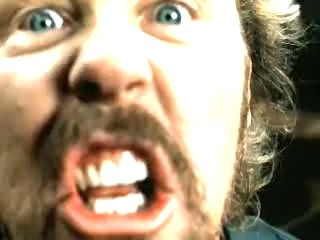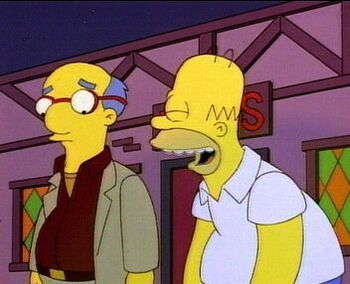User:NewReference
All About Me[edit | edit source]
I've created a talking pie.

...I don't envy the lot of the gorilla impressionist. It must be damn hard pretending to be another species. I can't see any of your so-called Hollywood A-list doing it. For one film maybe, but a whole career? Even Roddy McDowall started off playing humans.
No, it takes a very rare person to become an actor, and an almost extinct one to happily don such an unusual mask, attached as it is to the rest of the costume. Yet such a person was Charles Gemora. Born in Nebraska in 1892, the son of two parents, Charles was always interested in monkeys. But it was difficult for the Gemoras getting by as one of the many poor Irish families in the area, particularly given they were extraordinarily well off, and Polish. But they managed. Dressed in rags. smoking upside-down pipes, and saying "Begorrah" fooled most people, but Charles soon grew weary of the easy deception and craved greater challenge. When he turned up for breakfast one morning disguised as a middle-class Spaniard, Charles' father banished him from the house.
The boy protested. As Enrico Don Sebastian he could purchase a ticket to the zoo to look at the monkeys without raising the suspicions of Officer O'Reilly. Plus it was more artistically fulfilling. But it was no use arguing when his father was in one of his faux-Irish tempers. Gaelic, even when not screamed at you in a thick Polish accent, is difficult to understand. Charles left home for good. By the time he arrived in California by goods train a week later Charles had resolved to become an actor. But not just any actor. He was going to be Spencer Tracy. When Spencer Tracy heard about this he went right around to Charles' one-room apartment in downtown Burbank and threatened to beat the 15-year-old senseless with a billiard cue.
As the boy cowered, Spencer looked about the miserable room and at the hundreds of pictures of gibbons and baboons adorning the walls, and felt sorry for Charles. The kid reminded him of himself when he was just starting out and trying to make a name for himself, the same name in fact. He took Charles by the hand, down the street to the local pawnshop, and bought him an ape suit for "two bits". It fitted like a glove (that is, just over his hand).
"I expect big things from you, son," said Spencer in a voice that, had it been Katherine Hepburn's, would have been more recognisable. He would not be disappointed.
Variety hailed Charles and his ape suit as the greatest team since Chester Conklin and Larry Semon. The Chimp (1932), Farmer Alfalfa's Ape-Girl (1932), Bela Lugosi Meets The Brooklyn Gorilla (1952). Audiences loved them. Most of the time, however, reviewers would heap acclaim on the ape suit and ignore Charles completely, and jealousy set in.
Charles began drinking. Just water at first, then booze. As the ape suit got more and more popular, the once inseparable pair were seen in public together less and less. The ape suit was often photographed at the 500 Club on the arm of a beautiful woman, while Charles could be found blowing his pay on long shots at Santa Anita. A split-up was inevitable.
It followed a blazing row on the set of Disney's Greyfriars Bobby (1961). Walt had offered Charles and his suit the starring role. The Scottish terrier originally signed had contracted leprosy from Typhoid Mary (it was her day off) and had to pull out. It was hopeless miscasting. A gorilla curled up loyally on the grave of his master is, for some reason, not as moving as when played by a cute dog. But the trouble really began when the director asked Charles to "jump up on your hind legs and bark after they give you the keys to the city".
"I don't think my character would do that," complained Charles. But the director insisted. Charles refused. He was sacked. The ape suit stayed on and finished the film by itself. There was talk of an Oscar.
Charles went on to appear in a series of low-budget gorilla films for Educational but without the suit he was less than convincing and soon washed up and living in the streets. Greyfriars Bobby was released and bombed. The sight of the crumpled skin lying motionless on the ground for the film's full 120 minutes did nothing for audiences of the day. (Although Shane Danielson recently hailed it as "a masterpiece".)
Charles and the ape skin needed each other, but they were too proud to admit it. They re-teamed many years later for a charity show at the London Palladium. Their career had come full circle. Now the ape suit was wearing Charles' skin. There wasn't a dry eye in the house. Someone was burning plastics in the car park outside and had left the window open.
Charles Gemora died penniless in 1972 and left the gorilla skin to the Smithsonian Institute, which to this day uses it to wash the floors.


